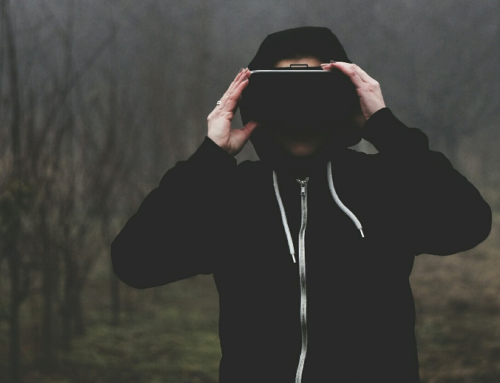Wie Sie mit Varjo`s VR-Headset in die virtuelle Welt abtauchen können.
Die meisten Virtual-Reality(VR)-Headset-Bildschirme zeigen immer noch ein verschwommenes Bild, aber das finnische Unternehmen Varjo hat einen ungewöhnlichen Ansatz, das zu ändern.
Das industrielle VR-1-Headset, das heute ausgeliefert wird, kombiniert ein superhochauflösendes Center-Panel mit einem gewöhnlichen Bildschirm für peripheres Sehen.
Es soll Bilder liefern, die fast echt aussehen, wenn auch mit einigen Einschränkungen und einem Preisschild, das wohl nur von Profis bezahlt werden wird.
Der VR-1 nennt sein zentrales Bedienfeld ein „Bionic Display“. Es handelt sich um ein 1920 x 1080 „micro-OLED“ Display mit einer Auflösung von 3.000 Pixel pro Zoll. (Im Zusammenhang damit hatte das hochauflösende Prototyp-Display von Google und LG im vergangenen Jahr 1443 ppi). Innerhalb dieses Mittelstreifens sollen die Bilder etwa der Auflösung des menschlichen Auges entsprechen. Ars Technica sagt z.B. dazu, dass dieses Headset in etwa „genauso detailliert aussieht, wie im wirklichen Leben“. Außerhalb dieses superscharfen Panels gibt es ein Display mit den Maßen 1440 x 1600, das Bilder von mittlerer Qualität erzeugt.
Das VR-1 bietet fast echt aussehende Bilder, mit einigen praktischen Kompromissen.
Das gesamte Sichtfeld des VR-1 ist kleiner als das des Oculus Rift oder HTC Vive, geschweige denn die 200 Grad, die so etwas wie Pimaxs experimentielles VR-Headset bietet. Das Bionic Display besteht nur aus einem Teil davon. Ars Technica beschreibt eine hervorragende Bildqualität, während Sie geradeaus schauen, mit einer spürbaren Herabstufung. Und das Rendern dieses hochauflösenden Slice erfordert mehr Rechenleistung, als Sie für durchschnittliche VR-Headsets benötigen, die bereits ziemlich anspruchsvoll sind.
Varjo versucht nicht, ein Headset für völlig eindringliche Unterhaltung zu entwickeln. Es löst spezifische Probleme für Geschäftskunden, wie z.B. Autodesigner, die feine Details an einem Fahrzeugmodell in Originalgröße untersuchen müssen, oder Piloten, die Flugsimulatoren mit vielen kleinen Tasten verwenden. Zusätzlich zu seiner hohen Auflösung verfügt das VR-1 über Eyetracking, das nach wie vor ein Premium-Feature für ein VR-Headset ist. Und Varjo plant, eine mit einer Kamera bestückte Frontplatte auf den Markt zu bringen, die Videos direkt an das Headset weiterleiten und es in ein Mixed-Reality-Gerät verwandeln kann.
Das VR-1 verwendet Standard SteamVR Basisstationen für das Tracken und unterstützt sowohl Unity als auch die Unreal Engine, so dass Sie theoretisch Spiele spielen oder andere Unterhaltungssoftware verwenden können. Aber das Headset ist für Verbraucher nicht preisgünstig.
Es kostet 5.995 Dollar bei einer jährlichen Servicegebühr in Höhe von 995 Dollar, und Varjo betont, dass es „nur für Unternehmen und akademische Einrichtungen verfügbar“ ist. Das Unternehmen arbeitet bereits unter anderem mit Airbus, Audi, Saab, Volkswagen und Volvo zusammen.
Die Verbraucher werden diese Dual-Display-Konfiguration nicht unbedingt in zukünftigen Headsets sehen. Es kommt mit einigen klaren Kompromissen, und die Hersteller von Headsets für Verbraucher scheinen sich auf hochauflösende Panels zu konzentrieren. Aber das VR-1 ist ein faszinierendes System, um eine unglaublich gute Bildqualität mit moderner Technologie zu bieten. Für alle anderen, die das Headset kaufen möchten, ist es in 34 Ländern in Nordamerika, Europa und Hongkong erhältlich.
Vielen Dank für ihren Besuch.


